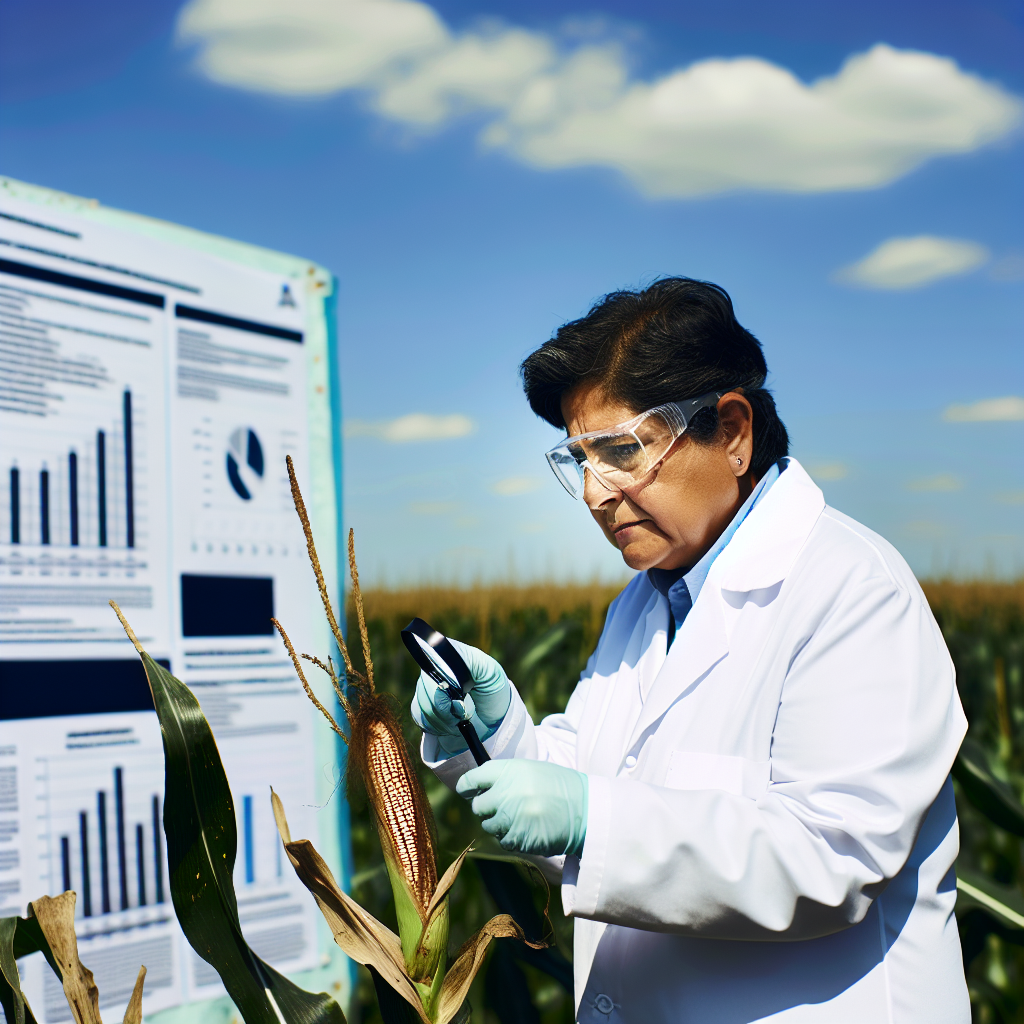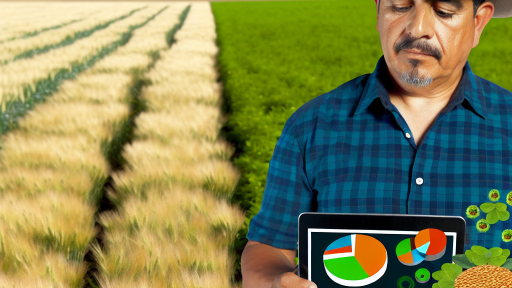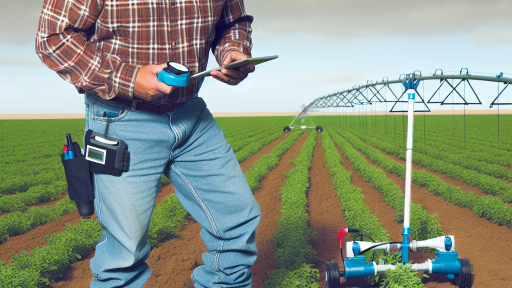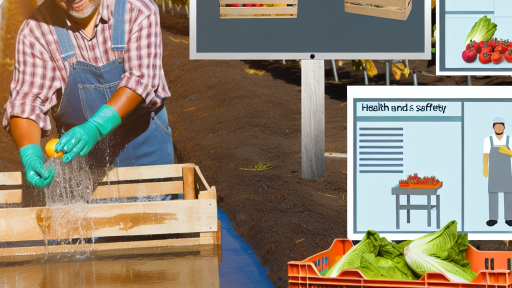Introduction to Pesticide Regulations and Their Importance in Agriculture
Pesticide regulations play a crucial role in modern agriculture.
They ensure the safe use of chemicals while protecting human health and the environment.
Farmers rely on these regulations for effective pest management strategies.
Moreover, they help maintain crop quality and yield by minimizing damage from pests.
Compliance with these regulations fosters sustainable agricultural practices.
Additionally, they promote public trust in food safety.
Understanding the framework of pesticide regulations is essential for all stakeholders.
These regulations vary significantly across different regions and countries.
For instance, the Environmental Protection Agency regulates pesticides in the United States.
In contrast, the European Union has its own set of stringent regulations.
Farmers must stay informed about these regulations to avoid penalties.
Non-compliance can lead to financial losses and reputational damage.
Furthermore, the implementation of regulations can influence agricultural practices.
For example, some farmers may shift to organic farming methods.
Pesticide regulations are vital for ensuring a balanced agricultural ecosystem.
Transform Your Agribusiness
Unlock your farm's potential with expert advice tailored to your needs. Get actionable steps that drive real results.
Get StartedThey help protect the interests of farmers, consumers, and the environment alike.
Historical Overview of Pesticide Use in Crop Production
The Early Adoption of Pesticides
The use of pesticides dates back to ancient civilizations.
Farmers in Egypt applied sulfur to control pests.
In the 19th century, chemical pesticides began to emerge.
Farmers sought effective solutions to protect their crops.
The Rise of Chemical Agriculture
The introduction of synthetic chemicals altered agriculture dramatically.
Dichlorodiphenyltrichloroethane (DDT) gained popularity in the 1940s.
This chemical helped control a wide range of pests.
Consequently, crop yields expanded significantly.
Concerns About Health and Environment
Public awareness of pesticide dangers increased over time.
Scientific studies linked chemical exposure to health risks.
Moreover, pesticides impacted non-target species and ecosystems.
This raised alarms among environmentalists and consumers.
The Push for Regulation
In response to growing concerns, governments began to act.
The U.S. established the Environmental Protection Agency (EPA) in 1970.
This agency regulates pesticide registration and usage.
Other countries followed suit, implementing similar regulations.
Current Regulatory Frameworks
Today, pesticides undergo rigorous testing for safety and efficacy.
Regulations aim to balance agricultural productivity with health considerations.
Farmers must comply with these regulations to maintain market access.
Consequently, integrated pest management practices are promoted.
The Future of Pesticide Use
Research is ongoing to develop safer, more sustainable alternatives.
Biopesticides and organic solutions are gaining traction.
Farmers face the challenge of adapting to these changes.
Showcase Your Farming Business
Publish your professional farming services profile on our blog for a one-time fee of $200 and reach a dedicated audience of farmers and agribusiness owners.
Publish Your ProfileOngoing education and support will be essential for success.
Analysis of Current Pesticide Regulations Across Different Regions
Overview of Global Pesticide Policies
Countries implement varying pesticide regulations worldwide.
These regulations often reflect local agricultural practices.
Additionally, the policies aim to protect human health and the environment.
United States Regulations
The Environmental Protection Agency (EPA) oversees pesticide regulations in the U.S.
The EPA evaluates the safety and effectiveness of pesticides before approval.
Moreover, states may impose stricter regulations than federal standards.
Impact on Farmers
Farmers must comply with the varied regulations across states.
This compliance may lead to increased production costs.
For example, some farmers may require training on new applications.
European Union Standards
The European Union (EU) follows stringent pesticide regulations compared to the U.S.
They emphasize sustainable practices and minimizing chemical use.
Pesticides undergo rigorous evaluation before they can enter the market.
Effects on Agricultural Practices
These regulations encourage the adoption of organic farming methods.
Farmers may face challenges transitioning to less chemical-dependent practices.
Nevertheless, this shift can yield long-term environmental benefits.
Regulations in Asia
Asia presents a mixed landscape of pesticide regulations.
Countries like Japan enforce strict regulations on pesticide usage.
In contrast, some Southeast Asian countries may lack comprehensive laws.
Economic Considerations
Farmers in less regulated countries might gain a competitive edge.
However, this advantage may come at the cost of environmental health.
Ultimately, balancing productivity and safety remains crucial.
Future Perspectives on Pesticide Regulations
Pesticide regulations continue to evolve globally.
These changes reflect an increasing awareness of safety and sustainability.
Going forward, stakeholders must adapt to the shifting regulatory landscape.
Find Out More: Navigating Environmental Regulations in Farming
Impact of Pesticide Restrictions on Crop Yields
Overview of Pesticide Regulations
Pesticide regulations aim to protect human health and the environment.
These regulations often limit the types and amounts of pesticides used in agriculture.
Farmers must adapt to these changing rules to remain compliant.
Effects on Crop Yields
Pesticide restrictions can lead to decreased crop yields in some cases.
Farmers rely on pesticides to manage pests and diseases effectively.
Without access to certain chemicals, crop health may decline.
Furthermore, reduced crop yields can impact food supply and prices.
Economic Implications
Lower crop yields can result in significant economic losses for farmers.
This financial pressure may lead farmers to explore alternative practices.
Some may invest in organic farming methods or integrated pest management.
Adoption of these alternatives can require substantial initial investments.
Balancing Safety and Productivity
Finding the right balance between safety and productivity is crucial.
Regulations must protect health without sacrificing agricultural output.
This balance can involve research into safer pesticide alternatives.
Showcase Your Farming Business
Publish your professional farming services profile on our blog for a one-time fee of $200 and reach a dedicated audience of farmers and agribusiness owners.
Publish Your ProfileInnovation in crop management can also support this equilibrium.
Future Trends and Adaptation
Farmers must keep up with evolving pesticide regulations.
Adapting farming practices to comply can safeguard crop yields.
Investment in technology, like precision agriculture, can help.
Technology enables targeted application of fewer pesticides with better results.
Learn More: How Food Safety Regulations Impact Agricultural Production
Comparative Study of Organic vs. Conventionally Grown Crops Under Regulations
Organic Crop Production
Organic crops are grown without synthetic pesticides.
This approach encourages the use of natural pest control methods.
Farmers adopt crop rotation, cover crops, and beneficial insects.
As a result, organic farming promotes biodiversity in ecosystems.
Soil health improves due to organic farming practices.
Moreover, organic regulations enhance consumer trust and demand.
Organic produce often commands higher market prices.
This financial incentive drives more farmers towards organic methods.
Conventionally Grown Crop Production
Conventionally grown crops often benefit from synthetic pesticides.
These chemicals provide immediate solutions to pest problems.
Nonetheless, over-reliance raises concerns about pest resistance.
Regulations on synthetic pesticides impact farmers’ choices significantly.
Compliance with regulations can drive up production costs.
Furthermore, the use of genetically modified organisms (GMOs) is common.
This technology can enhance yield and crop resilience.
However, GMOs face significant public scrutiny.
Effects of Pesticide Regulations on Crop Yields
Regulations can restrict the number of pesticides available.
Consequently, some farmers report decreased yields of conventionally grown crops.
Organic crops may also experience yield fluctuations due to pest pressure.
However, long-term soil health can bolster yields over time.
Farmers adapting to stringent regulations often innovate their practices.
Agroecological methods emerge as viable alternatives.
Market Response and Consumer Perception
Consumer preferences significantly influence farming practices.
There is a growing demand for sustainably produced food.
This trend supports organic farming amidst regulatory challenges.
Consumers perceive organic products as safer and healthier.
Market responses can encourage a shift towards more sustainable practices.
Implications for Future Farming Strategies
Regulations shape both organic and conventional farming landscapes.
By understanding these impacts, farmers can make informed decisions.
Ultimately, balancing productivity with environmental stewardship is key.
This balanced approach can enhance food security and ecological health.
See Related Content: Environmental Impact Assessments in Agriculture

Economic Implications of Pesticide Regulations
Impact on Farmers
Pesticide regulations directly affect farmers’ operational costs.
Compliance with these regulations often requires significant financial investment.
Showcase Your Farming Business
Publish your professional farming services profile on our blog for a one-time fee of $200 and reach a dedicated audience of farmers and agribusiness owners.
Publish Your ProfileFarmers may need to purchase new equipment to meet standards.
They might also invest in organic farming methods as alternatives.
Ultimately, these investments can strain smaller farms financially.
Market Prices and Consumer Costs
Pesticide regulations can lead to increased market prices for crops.
These higher prices arise from increased production costs borne by farmers.
As a result, consumers may face higher grocery bills.
This trend is especially noticeable in areas with a heavy reliance on pesticides.
Consequently, consumers often seek budget-friendly alternatives.
Effects on Crop Yields
Regulations may also impact crop yields in the short term.
Many farmers experience reduced production as they adjust to new rules.
However, some studies indicate that long-term practices improve yields.
These practices enhance soil health and pest resistance over time.
Transitioning to sustainable methods can ultimately benefit food supply.
Broader Economic Effects
Changes in crop production influence the entire agricultural economy.
They affect related industries, such as processing and distribution.
Moreover, employment in agriculture can also fluctuate with production levels.
As production costs rise, job growth in the sector may slow.
Thus, the ripple effects of pesticide regulations can be far-reaching.
Uncover the Details: Overview Of Organic Farming Regulations
Effects of Pesticide Regulations on Pest Resistance and Ecosystem Health
Understanding Pest Resistance
Pesticide regulations directly influence the development of pest resistance.
When farmers rely heavily on specific pesticides, pests can adapt and develop resistance.
This phenomenon leads to increased pest populations, exacerbating crop damage.
Consequently, farmers may resort to using stronger pesticides, creating a cycle of dependency.
Regulations encourage farmers to adopt integrated pest management strategies.
This approach reduces reliance on chemical controls, fostering environmental balance.
As a result, pest resistance can be slowed, benefiting long-term crop production.
Impacts on Ecosystem Health
Pesticides can adversely affect non-target species, including beneficial insects.
For instance, bees play a crucial role in pollination, essential for many crops.
Excessive pesticide use poses significant risks to these essential pollinators.
Moreover, pesticide runoff can contaminate local waterways, impacting aquatic life.
Regulations aim to mitigate these risks by promoting safer pesticide use.
This shift supports healthier ecosystems and reduces biodiversity loss.
Shifts in Agricultural Practices
Many farmers are adopting more sustainable agricultural practices due to regulations.
These practices include crop rotation and organic farming methods.
Such strategies enhance soil health and reduce pest populations effectively.
Transitioning to these methods requires education and support for farmers.
Government initiatives often provide financial assistance and training programs.
As a result, farmers can better adapt to strict regulations, ensuring productivity.
Future Considerations
Balancing pesticide use with environmental health remains a significant challenge.
Ongoing research is critical to understand the dynamics of pest resistance.
Showcase Your Farming Business
Publish your professional farming services profile on our blog for a one-time fee of $200 and reach a dedicated audience of farmers and agribusiness owners.
Publish Your ProfileMoreover, advancements in agricultural technology can enhance pest management.
As new regulations emerge, farmers must be prepared to adapt continuously.
Ultimately, sustainable practices offer a viable path forward for all stakeholders.
Future Trends in Pesticide Regulations and Their Potential Impact on Sustainable Agriculture
Shifts Towards More Stringent Regulations
The trend towards stricter pesticide regulations is gaining momentum globally.
Governments are increasingly prioritizing environmental health and food safety.
For instance, the European Union is tightening regulations on pesticide usage.
This shift aims to reduce chemical residues on food and minimize biodiversity loss.
Integration of Precision Agriculture Technologies
Precision agriculture is set to revolutionize pesticide application methods.
Farmers will increasingly use data analytics to optimize pesticide usage.
This will lead to reduced chemical applications and lower environmental impacts.
Technologies such as drones and soil sensors will play key roles.
Rise of Biopesticides and Sustainable Alternatives
The market for biopesticides is growing rapidly as a response to regulations.
Farmers are exploring organic solutions that are less harmful to ecosystems.
Investments in research for sustainable alternatives are increasing.
Consequently, traditional synthetic pesticides may see a decline in use.
Increased Consumer Awareness and Demand
Consumers are now more informed about pesticide usage in agriculture.
This awareness is driving demand for organic and sustainably produced foods.
As a result, farmers are adapting their practices to meet market preferences.
Consequently, businesses are prioritizing transparency in their pesticide usage.
Regulatory Compliance and Economic Implications
Compliance with evolving pesticide regulations poses challenges for farmers.
Costs for certification and implementation of sustainable practices may rise.
However, these challenges can also lead to new economic opportunities.
Investments in sustainable methods can result in long-term savings.
Impact on Crop Diversity and Resilience
Future regulations may encourage more diverse cropping systems.
Diverse ecosystems can enhance resilience against pests and diseases.
Crop rotation and intercropping will become more common practices.
These approaches can reduce reliance on chemical pesticides.
Research and Development Priorities
More emphasis on research for sustainable farming practices is essential.
Collaboration between governments, universities, and farms will evolve.
Investments in education will help farmers adopt new techniques effectively.
This shift aims to promote sustainable agricultural models globally.




